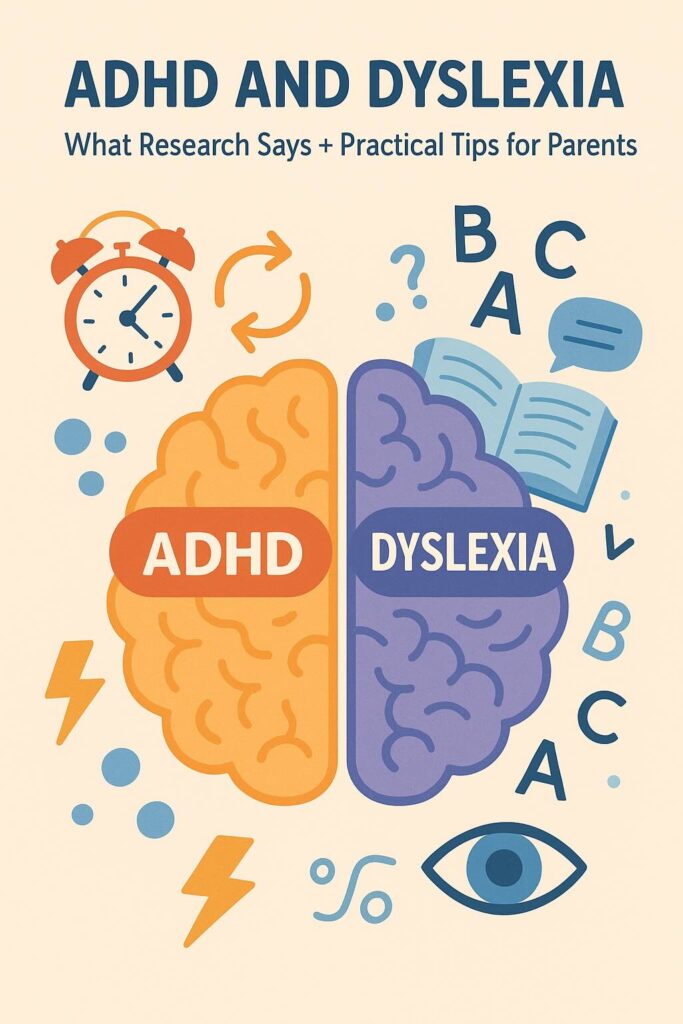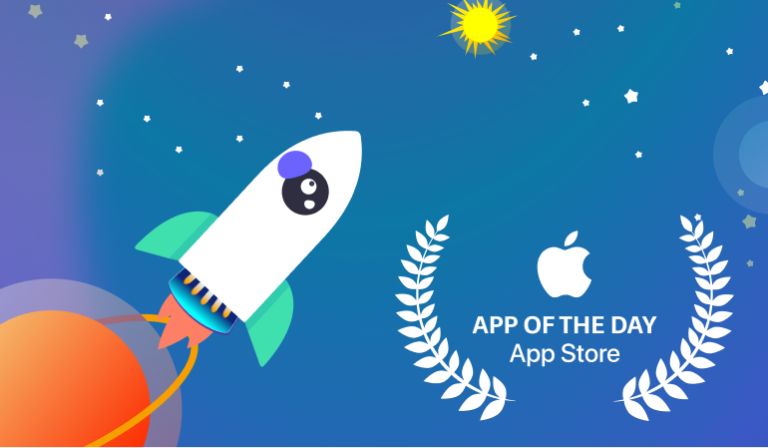As a parent of a child aged 7 to 12 who is navigating dyslexia, you might have noticed challenges that go beyond reading difficulties – perhaps issues with attention, hyperactivity, or impulsivity. It’s not unusual.
Scientific research has increasingly highlighted the frequent co-occurrence of Attention-Deficit/Hyperactivity Disorder (ADHD) and dyslexia, a phenomenon known as ADHD dyslexia commorbidity.
Understanding this dual diagnosis can feel overwhelming, but it can also open doors to more effective support strategies tailored to your child’s unique needs.
In this post, we’ll explore key research on ADHD and dyslexia that explains how often these conditions overlap, why this happens, and how it shapes a child’s learning experience. We’ll also share practical recommendations and dual diagnosis reading strategies that can help you support your child at home and school.

What does the research say about ADHD and dyslexia?
Research shows a significant overlap between ADHD and dyslexia, but exactly how frequently do they co-occur? Studies have found that as many as 30% to 50% of dyslexic children also meet criteria for ADHD, particularly the inattentive type. Dr. Sally Shaywitz, a leading researcher in dyslexia, highlights that these two neurodevelopmental conditions often share underlying brain-based differences affecting executive functioning, attention regulation, and phonological processing.
Why is this co-occurrence so common? Both ADHD and dyslexia impact cognitive processes essential for reading. Dyslexia primarily affects the ability to decode words and process language sounds (phonological awareness), while ADHD affects attention and working memory. When combined, a child faces double hurdles: difficulty focusing on reading tasks and challenges decoding written text. This explains why children with both diagnoses often experience more significant academic struggles than those with just one condition.
Understanding this research underscores the need for comprehensive evaluations and interventions that address both ADHD and dyslexia simultaneously, instead of treating them in isolation.
How does ADHD affect reading practice for dyslexic children?
Recognizing the presence of both ADHD and dyslexia in your child is crucial because it completely changes the approach needed for reading practice. A child with dyslexia alone benefits from specialized phonics-based instruction. However, a child with ADHD dyslexia co-occurrence requires additional support to manage attention and self-regulation during learning.
Why? Because ADHD symptoms like distractibility, impulsivity, and difficulty sustaining focus can disrupt even the best-designed reading interventions. Your child might understand a phonics rule one day but seem unable to apply it the next – not because they don’t grasp it, but because their attention wavers.
How does that look in practice? For example, a reading session may need to be broken into shorter, more frequent segments to accommodate attention spans. Visual and hands-on activities can help maintain engagement. Organization and clear routines reduce frustration, while positive reinforcement keeps motivation high.
Teachers and therapists who know about the ADHD dyslexia co-occurrence will likely recommend multi-sensory and interactive approaches combined with behavioral strategies that foster focus. As a parent, partnering with educators about your child’s unique learning profile can make a big difference.
Practical tips for managing ADHD and Dyslexia co-occurrence at home
Now that we understand the overlap between these two conditions, here are some actionable tips based on dual diagnosis reading strategies to support your child during reading practice:
- Structured, predictable reading sessions: Set a consistent time and place for reading each day. Predictability helps reduce distractions and prepares your child mentally to focus.
- Short, goal-oriented tasks: Instead of long reading marathons, break tasks into 10- to 15-minute segments with clear, achievable goals. Take breaks to avoid mental fatigue.
- Multi-sensory learning approaches: Use materials that engage multiple senses – like tracing letters in sand, tapping syllables, or using letter tiles. This approach supports phonological processing and keeps attention engaged.
- Minimize environmental distractions: Choose a quiet, clutter-free space. Use noise-canceling headphones if needed, and remove unnecessary electronics from the room.
- Use visual cues and highlighting: Color-code texts or use highlighters to emphasize important words or parts of text. Visual anchors improve tracking and comprehension.
- Incorporate movement breaks: Schedule short physical activities between reading intervals. Movement helps regulate ADHD symptoms and prepares the brain to focus.
- Positive reinforcement: Praise your child’s efforts consistently. Celebrate small successes to build confidence and motivation.
- Keep a reading journal: Encourage your child to keep a simple log of what they read and how they felt during the session. It fosters self-awareness and gives you insight into progress.

